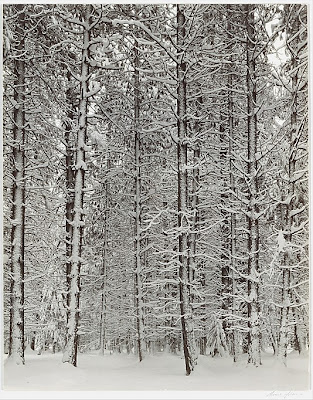Well after a four week hiatus, I am back. The holidays were a total blur. A wonderful, family and friend filled blur, but nevertheless very busy. My husband and I traveled a good deal which made squeezing in blog time rather difficult. But now that we are back in new york and settling in for the winter I am once again discovering that free time does exist.
I have not seen any shows since I have been back, but there are plenty on my list for this month. Next week I am planning on visiting "Faking It: Manipulated Photography Before Ohotoshop" at the Metropolitan Museum of Art and am also attending an opening at the International Center of Photography, so I will have lots to discuss.
Although I didn't have time to write while I was away I did have a lot of time to read and to catch up on podcasts as well as to discover a few new ones. As I'm sure you know many museums publish podcasts of symposiums, conferences and general exhibition tours. These are some of my favorite to listen to not only because I can't make it to every event but also because it allows you to revisit a particular exhibition through a simple auditory experience. These podcasts are also great if you do not have access to the wide gamut of institutions that we have here in New York.
In addition to museum published podcasts I have been listening to a variety of independent ones. One of my new favorites is a series of class lectures on the history of photography. This podcast is published by Jeff Curto who is a professor at the college of Dupage in Chicago, Illinois. Curto has two podcasts, one focuses on the more creative aspects of photography called "Camera Position" and another is broadcast of history of photography lectures.
Recently, I have been considering applying for PhD programs so that I can further my career as an art historian and educator so I thought it would be interesting to hear Curto's take on photography's history.
I found his lectures to be incredibly insightful and interesting. He not only outlines the complex, although relatively brief history of the medium, but encourages his students to think about photographs and how we interact with them on a daily basis. In his first two episodes he provides a condensed overview of the timeline of photography. He begins his chronology not with the year 1839 and the invention of the mechanically reproduced image but with ancient Egypt and the importance of perspective, subject matter and point of view.
He continues on this train on thought and highlights other important art historical moments such as Giotto's frescos and the use of the
camera obscura,
camera lucida and so on. I found his methodology of outlining photography within the greater context of art and the history of the world to be a dynamic approach. Rather then the traditional presentation of a simple timeline beginning with Louis Daguerre and Henry Fox Talbot. Curto's course encourages students to think about photographs as not only historical documents and "high art" but as something we interact with on a daily basis.
I looking forward to listening to the remainder of his lectures. For the rest of the course he breaks his discussions into thematic subjects with titles such as: "Light and Likeness" and "Photography as Transportation." hether you are interested in photography, teaching the history of photography or just need a refresher course, listening to Curto's podcasts is a wonderful way to spend a few hours. I have also begun following him on twitter @jeffcurto and #photohistory.
I would love to hear what podcasts you listen too and if you have any preferred methodology to teaching photographic histories and I'll keep you updated if I find any other noteworthy podcasts.


















